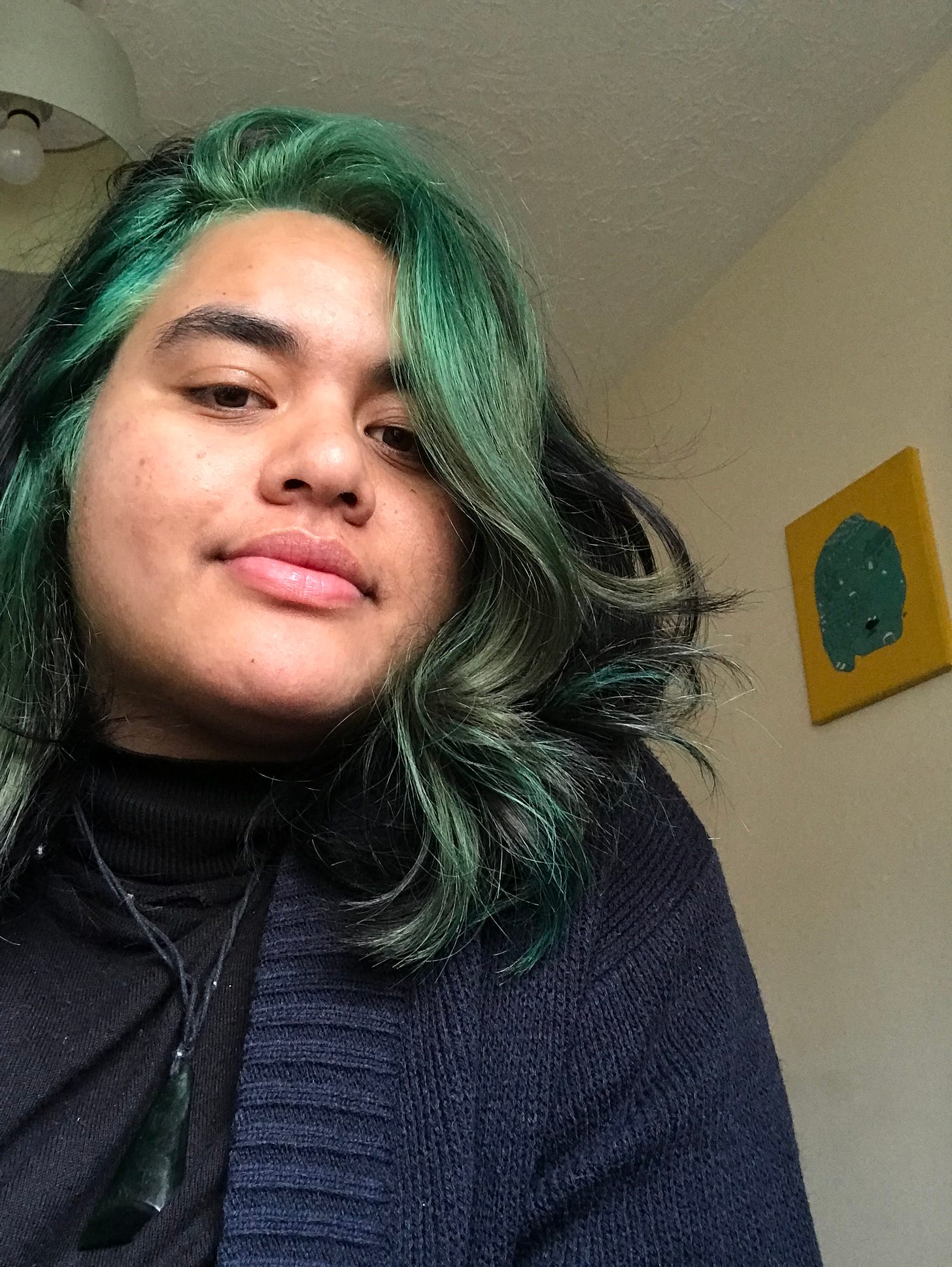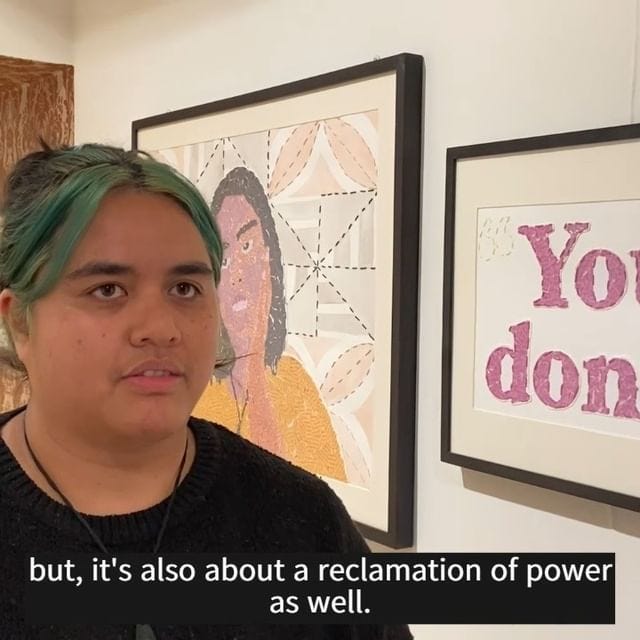Sina Leasuasu: “I felt like I belonged everywhere and nowhere”
The artist on clinging to culture, mixed imposter syndrome and her strong ancestral lineage
Hi, welcome back to Mixed Messages! This week I’m speaking to artist Sina Leasuasu, who is of mixed Maori and Samoan heritage. Sina is showing at Birmingham’s Midlands Arts Centre as part of Mixed Rage Collective’s Unapologetically Other exhibition, alongside last week’s guest Niall Singh. Read Sherrie’s story below.
How do you define your racial identity?
My mum is Maori, indigenous to New Zealand, and my dad is from Samoa, a polynesian island in the South Pacific. I call myself mixed-race, or mixed-heritage. I grew up around so many mixed-race people, it was quite normal as we were colonised. I never really thought about it that much, until I got to school and people started to point out differences.
If you looked at me, you wouldn’t necessarily know that I’m mixed-race. Sina is a very Samoan name, but people would say that they didn’t realise I was Samoan. I didn’t know I didn’t look Samoan to them. No matter which side I went to, I’d look the opposite. It was confusing. I felt like I belonged everywhere and nowhere.
Has your sense of self shifted over time?
I definitely went through life trying to identify with one culture more than the other. New Zealand is such a melting pot of cultures, and schools try to embrace that through performance. Every year there’s a festival where you perform songs and dances. I would try and bounce around the different cultural groups to place myself. I clung to one culture and forgot about the other, then I’d move to the other side. I felt like you could never be in-between, so I code-switched a lot. I didn’t even know I was doing it. Subconsciously, your body switches into survival mode.
Aside from music and dance, were there any other ways you connected to your cultures?
As I’ve gotten older, I associate a lot of memories with food. Not just the food I grew up eating, but the way it was prepared. I connect through my art as well. My self-portrait in Unapologetically Other has patterns and motifs that I just grew up drawing, but they’re a big part of Samoan culture. I don’t remember anyone teaching it to me.
Did you ever speak to your family about how you felt about yourself?
There were comments here and there. I remember saying to my mum quite casually in the car, “I wish I wasn’t half-Maori.” She was really offended – rightfully so.
I don’t think I ever expressed to my family how torn I felt growing up. A lot of my friends and cousins were mixed-heritage, but at the time I didn’t realise that other people were going through what I was. I don’t think I spoke about mixedness much until I came across [Mixed Rage’s] Sevonah Golabi on Instagram.
Tell me more about how you got involved with Mixed Rage Collective!
I reached out to Sevonah and asked if I could have a zine. Ever since then, it’s been such an eye-opening experience, talking to people of mixed heritage and hearing that they’re having similar, but also really different, experiences. I was especially keen to reach out to Sevonah because she doesn’t have white in her mix – I think a lot of people assume that mixed people are part-white. I had imposter syndrome over being mixed-race because both of my parents are brown.
It’s been rewarding to have these conversations with people who just get it. It feels validating. It’s given me the confidence to incorporate those views into my artwork. Art is a vulnerable place to put yourself, especially when you know it’s going to be exhibited in public. But I feel really supported by Mixed Rage Collective.
Do you think there’s a stereotype of what it means to be mixed? How do you want the conversation to push forward?
People say “you’re so lucky to have two amazing cultures,” and I am, but you have to realise that that’s two different worlds you have to fit yourself into, or try and incorporate into your world.
I would like the conversation to keep opening up, expanding what we consider to be mixed-race. I feel like a lot of mixed-race people don’t tend to be open about it, and I think that comes from shame. I definitely felt ashamed because I couldn’t speak the language. It’s about breaking down the boxes that we’ve built for ourselves.
What’s the best thing about being mixed for you?
I feel really proud to be part of two strong cultures. I’m just so happy to have that richness and a real sense of community from both of them. My strength comes from my ancestors, my grandmother, my mum… It’s a strong lineage, and I’m proud of how much my cultures have overcome over time.
Can you sum up your mixed experience in a word?
Enriching.
See Unapologetically Other at the Midlands Arts Centre for free now. Next week I’ll be talking to artist Sherrie Edgar. Subscribe to get Mixed Messages in your inbox on Monday to find out.
Enjoy Mixed Messages? Support me on Ko-Fi! Your donations, which can start from £3, help me pay for the transcription software needed to keep this newsletter weekly, as well as special treats for subscribers.
Mixed Messages is a weekly exploration of the mixed-race experience, from me, Isabella Silvers. My mom is Punjabi (by way of East Africa) and my dad is white British, but finding my place between these two cultures hasn’t always been easy. That’s why I started Mixed Messages, where each week I’ll speak to a prominent mixed voice to delve into what it really feels like to be mixed.







